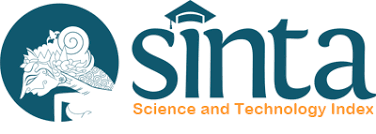Memelihara Kestabilan Emosional dengan Terapi Emotional Freedom Technique (EFT) di Masa Pandemi Covid–19
Abstract
The pandemic of covid-19 has impacted many sectors. Millions of people victims this virus and disturb mental health. All of them becase declining income, social distancing and methods that always change. It’s need preventive efford and curative to save healty and emotional. Emotional freedom technique (EFT) is felt appropriately for stabilizing emotions and became simple methods to all generation. Focus on negative emotional problem that sould be addressed by describing problems and typing meridian. the purpose from This activities are for protect emotional stability by Emotional freedom technique. The method used by qualitative phenomology. The subject or client from this EFT is the youth of palembon village, kanor district in the bojonegoro regency. This activity is in the forum of workshop by nine youth of palembon in resident’s house at 9-10 of april 2021. From this workshop, subject get education about EFT and how to applicated it. In the first day, the workshop start from 09.00 AM until 02.00 PM. And in the second day, start from 09.00 AM. Until 12.00 AM. In the third day, any perform devotion to the subject with individual model to put more emphasis on aspects of decency and secrecy, that is on 12 – 13 of April 2021. The problem that arised in the post-crucial of the pandemic is boredom complained regarding education and employment. Use EFT make persons more relaxed and less nervous to do something. The result from this devotion is satisfying results. One use therpy of EFT in the a group and 3 times by personal make the client’s cycle of negative emotional problems has declined significantly.
Downloads
References
Fahruddin, Azwar Asy’ari dan Adi, Mateus Sakundarno. 2019. Tingkat Kecemasan pada Ibu Hamil selama Pandemi Coronavirus Disease, , Jurnal Penelitian Kesehatan Suara Forikes Volume 12 Nomor 3, Juli 2021, p-ISSN 2086-3098 e-ISSN 2502-7778 Jurnal Penelitian Kesehatan Suara Forikes, http://forikes-ejournal.com/index.php/SF, DOI: http://dx.doi.org/10.33846/sf12312
Nurmawati S. Lataima, Ninuk Dian Kurniawati, Puji astuti, 2020, Manfaat Emotional Freedom Technique (EFT) Bagi Pasien Dengan Gangguan Kecemasan, Jurnal Penelitian Kesehatan Suara Forikes Volume 11 Nomor 2, April 2020, p-ISSN 2086-3098 e-ISSN 2502-7778 129 Jurnal Penelitian Kesehatan Suara Forikes. http://forikes-ejournal.com/index.php/SF,DOI: http://dx.doi.org/10.33846/sf11204
Janet, E.2013. EFT: EFT Tapping Scripts & Solutions To An Abundant YOU: 10.Simple DIY, Speedy Publishing LLC ,
Suryanto, I. 2019.EFT For Parenting: Seni Mendidik Anak Dengan Mendidik DiriSendiri,Mediatama plus.
Sugiyono. 2016. Metode Penelelitian Kuantitatif, Kualitatif, dan R&D. Bandung: Alfabeta.
Suwetty, Awaliyah Muslimah dan Beni, Kornelis Nama. Faktor yang Berhubungan Dengan Gangguan Mental Emotional Masyarakat di Masa Pandemic COVID-19, Jurnal Penelitian Kesehatan Suara Forikes, Volume 11 Nomor Khusus, November-Desember 2020, p-ISSN 2086-3098 e-ISSN 2502-7778, Peringatan Hari Kesehatan Nasional dan Hari AIDS Sedunia 135 Jurnal Penelitian Kesehatan Suara Forikes, http://forikes-ejournal.com/index.php/SF. DOI: http://dx.doi.org/10.33846/sf11nk424.
Dewi, N Luh dan Wati, N Made. Pengaruh Emotional Freedom Technique (EFT) terhadap Kecemasan pada Pasien Chronic Kidney Disease (CKD). Jurnal Kesehatan Indonesia (The Indonesian Journal of Health), XI (2), 58
Zahro, I.F, Amalia, R dan Sugito. (2021). Deskripsi Kemandirian Siswa dalam Pembelajaran Daring pada Masa Pandemi Covid. Jurnal Keislaman dan Pendidikan Attanwir 12 (1), 63-75


.png)

.png)




.png)
.png)


